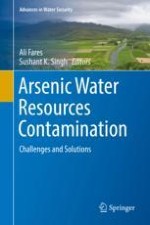2020 | OriginalPaper | Chapter
10. Assessing and Mapping Human Health Risks Due to Arsenic and Socioeconomic Correlates for Proactive Arsenic Mitigation
Authors : Sushant K. Singh, Robert W. Taylor
Published in: Arsenic Water Resources Contamination
Publisher: Springer International Publishing
Activate our intelligent search to find suitable subject content or patents.
Select sections of text to find matching patents with Artificial Intelligence. powered by
Select sections of text to find additional relevant content using AI-assisted search. powered by
